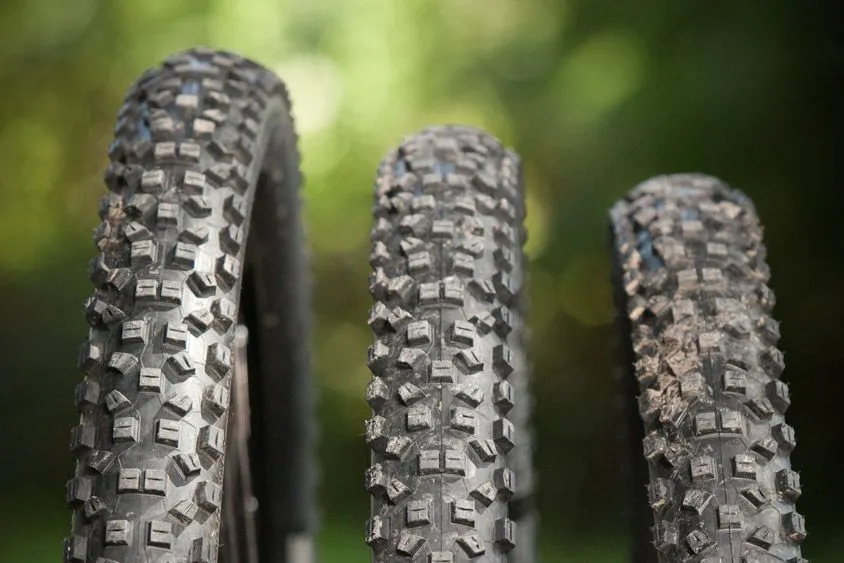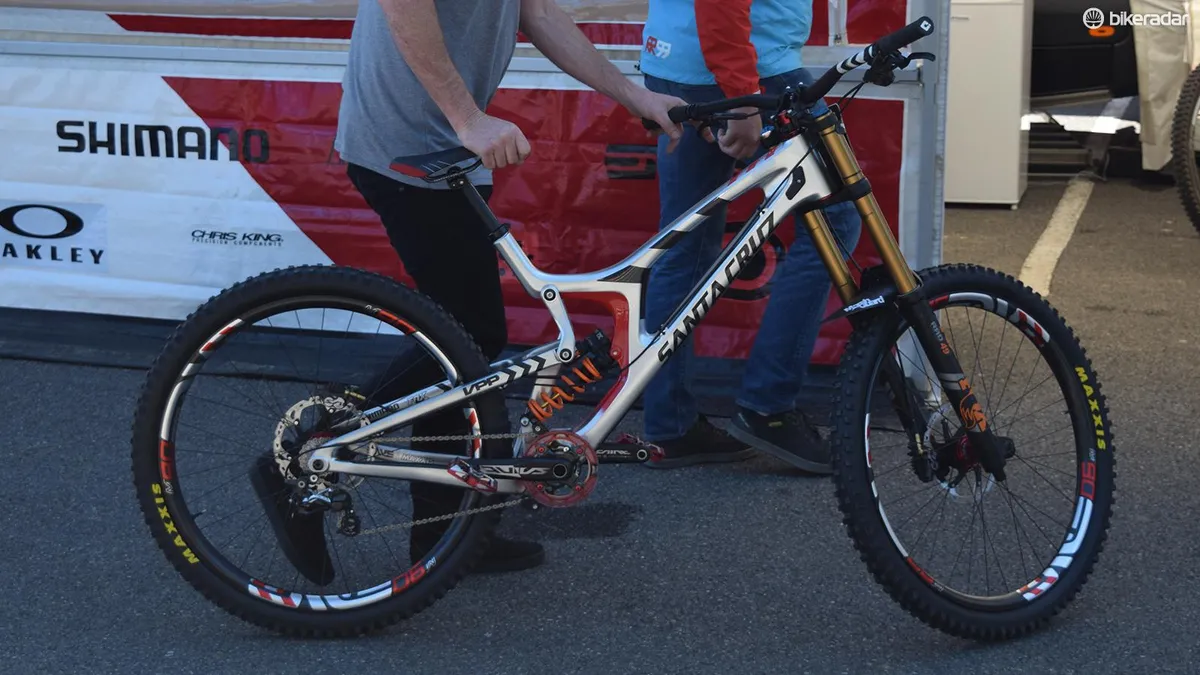The UCI has stated 32in wheels will not be banned at mountain bike XCO World Cups, citing the value of product development and innovation that arises from mountain bike racing.
First reported by Mountain Bike Action Magazine, and then by Escape Collective, the UCI's Fabrice Tiano – the governing body's communications and media relations senior manager – states that: "The mountain bike commission always considered mountain bikes as the laboratory of cycling with very limited rules regarding equipment. That is the reason why 32-inch wheels will not be banned in mountain bikes.”
We approached the UCI for comment on whether 32in wheels will be banned or approved for racing at World Cups after spotting BMC's 32in prototype at the Andorran round of the 2024 series, but no one from the organisation replied.
This official statement is big news for the sport because 32in wheels have the potential to repeat the revolution we saw when mountain bikes shifted from using 26in to 29in wheels in the early-to-late 2000s.
- Read more: Are we on the cusp of a 32in wheel revolution? This is what pro XC racers are riding in 2025
Industry momentum

Clearly, the UCI's decision is based on growing industry momentum behind 32in wheels.
Maxxis is making the 32in Aspen XC race tyre, which was initially intended for the 2024 Olympics.
The BMC bike caused quite a stir, despite only being ridden during practice rather than the race itself.
KTM also teased a 32in XC race bike, but this time a hardtail. The brand seems to think it can make 32in wheels work for any size of rider, which is good news for shorter people wanting to try the new tech.
Brands such as DirtySixer and Zinn are already making 32in mountain bikes – that you can buy right now – and we've heard rumours from numerous other brands of their development, indicating the industry is on the cusp of being ready to embrace the new wheel size.
Weighing up the positives and negatives

Those familiar with the move from 26in to 27.5in and now 29in wheels, and the benefits and negatives each of those wheel sizes offers, should be able to understand the arguments for and against the move from 29in to 32in wheels.
As positives, we've got higher rolling speeds and smoother bikes thanks to better bump roll-over, potentially leading to faster speeds and more exciting racing.
A larger tyre-to-ground contact patch should improve grip and slower handling provides more stability.
Negatively, handling may be slow and lethargic in tighter trail situations, and extra watts will be required to get those bigger wheels turning.
Just as on the first 29in-wheeled bikes, frame geometry may be impacted negatively until engineers can master how to fit those bigger wheels within the confines of a bike frame designed for human beings rather than giants.
What does this mean for World Cup racing?

On the race track, speed is king and the stopwatch doesn't lie.
Race teams, their bike sponsors, those brands' engineers and, ultimately, the riders will naturally gravitate towards anything that gives them an advantage over the competition – the only thing that really matters is winning.
I expect many of the biggest race teams will be experimenting with 32in wheels in 2026, especially on faster, less technical courses where those biggest hoops are likely to be most advantageous.
The UCI has given teams carte blanche to do so – now there's no uncertainty about whether or not a team can or cannot use 32in wheels, you can bet most will be feverously prototyping their own bike.

But as we've seen in downhill racing, the exact – and winning – formula may take some time to settle on.
In 2017, when Santa Cruz launched its 29in-wheeled V10 at the Lourdes round of the World Cup, it made other brands look as if they were resting on their laurels.
Despite the V10 getting nowhere near the podium, a panicked scrabble ensued among the other manufacturers to produce a 29in-wheeled DH bike. The perceived benefits – real or psychological – were too hard to ignore.
That same back-footed scramble is less likely in the XC world – teams had an early warning with BMC's prototype, so come 1 May 2026 in South Korea, teams will be ready to debut their polished rigs.
The rules still apply

Despite the UCI's rather libertarian – and surprising – statement in relation to 32in wheels, there are still rules that XCO race teams have to abide by.
The most important of these doesn't apply to downhill.
Mixing wheel sizes has the green light for gravity-fed racing, and many bike manufacturers have settled comfortably on the mullet wheel setup being best.
Almost every downhill bike runs a 27.5in rear and 29in front wheel. There are some exceptions, and a lot of bikes can be switched between mullet and pure 29in.
But in the XC world, mixed wheel sizes are not allowed.
There could be plenty of compelling arguments for 29/32in mullets, mostly offering a better balance between the pros and cons I mentioned.
Although this is off the table for 2026's World Cup series, it wouldn't surprise me if we see some prototypes of this ilk kicking about at some point soon.




